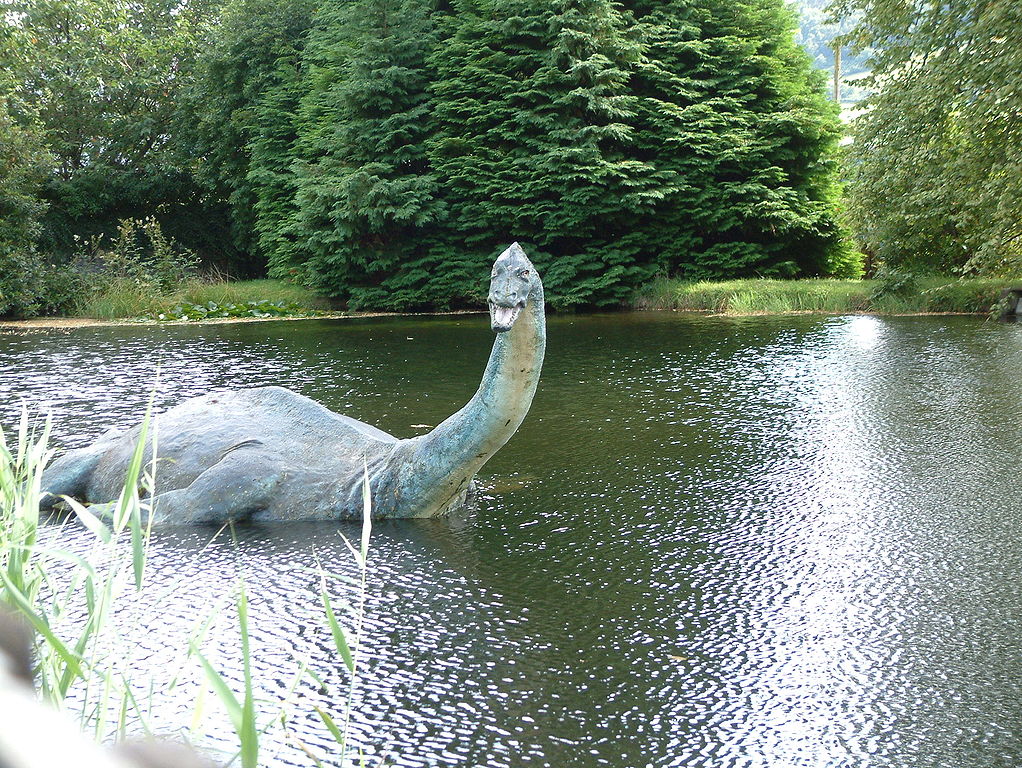One of the most famous cryptids that I’ve never covered is Nessie, otherwise known as the Loch Ness Monster. Originally spotted in 565 AD, Nessie is thought to be one of the oldest cryptids around. Hailing from the Scottish lakes and oceans, Nessie is a sea monster described as being large in size with a neck that protrudes out of the water along with one or two humps on its back. The name ‘Nessie’ was adopted in the 1940s and has continued to be used to this day. The evidence for Nessie seems to be rooted in a few shaky photographs, some footage, and sonar recordings of the water, but the truth of Nessie’s existence remains unknown.
It’s thought that the first modern account of Nessie was in the 1870s yet it was unrecorded until 1934. D. Mackenzie saw something in the water that was ‘wriggling and churning’. However, newspaper clippings from years prior showed that there were stories about Nessie before the first major sighting in 1934. On May 2, 1933, “Inverness Courier” published a compelling article about Nessie. The article described ‘a large beast’ or ‘whale-like fish’ written by Alex Campbell and discussed a sighting of the creature by Aldie Mackay. She claimed to see a creature rolling around in the water during a drive with her husband.
Another account was recorded in August of that same year, with another person describing the creature in a similar fashion to previous encounters. Over the course of the next few years, letters began flooding Courier, all claiming to have their own accounts of sighting the creature. After a few different names, like ‘sea serpent’ or ‘dragon’, the media eventually settled on Loch Ness Monster.
The earliest known account in history dates back to 565 AD and was documented in “Life of St. Columba” by Adomnan. It was written about a century after the events occurred and described an encounter where Columba came across men burying a dead man who they claimed had been ‘attacked by a sea beast and mauled’ when he was dragged under. The story goes on that Columba sent a follower across the river and when the beast approached him, Columba made the sign of the cross and demanded the beast leave the man alone, which it did. This story, while being the basis for many believers in Nessie, is thought to be completely separate from the actual myth itself.
One of the most widely controversial pieces of evidence is a photograph entitled “Surgeon’s Photograph.” It was taken by Robert Kenneth Wilson, a local gynecologist in the area and was published in the Daily Mail on April 21, 1934. Two of the four photographs taken came out clear enough to view, the first showing a head and partial back, while the other shows ahead in the diving position. The first photo has become world-famous, while the other is still too blurry. The photo was considered legitimate evidence for around 60 years but wasn’t without its share of controversy. It’s been decided since 1994 that the photo was a fake. In the 1994 book, “Nessie – the Surgeon’s Photograph Exposed,” it was supposedly revealed that the photo was faked using a toy submarine that was built by the son-in-law of Marmaduke Wetherall. It’s supposed that Wetherall did this as a way to poke fun at his ex-employer whom he’d made fun of for believing in Nessie footprints.
The Loch Ness Phenomena Investigation Bureau was founded in 1962 and ended in 1972. It was a foundation dedicated to researching Nessie and the phenomena that surrounded the creature. They had a subscription service if you wanted to be a member, which was annual and covered the administration costs. It had 1,030 members, with 588 from the UK alone.
In 2015, Google spent a week recording the Loch above and below the water in honor of Nessie’s 81st anniversary. They also commemorated the event with a drawing of the Surgeon’s Photograph on their search page.
A common thought is that one of the dinosaurs or perhaps a few of them (at least four or more) may have survived whatever wiped out the dinosaurs and then began to breed and create new generations. It could explain why Nessie has been seen for so long. The thought is that Nessie, or the Loch Ness Monsters if there’s truly more than one, is a Plesiosaur, as the body type and nature of the creature would make sense.
The truth is, what Nessie is or if it truly exists may never be known. What will remain true, however, is Nessie’s base in popular culture as well as its status as a cryptid will forever have its place in today’s society.
Jeri Hensley
Reporter

